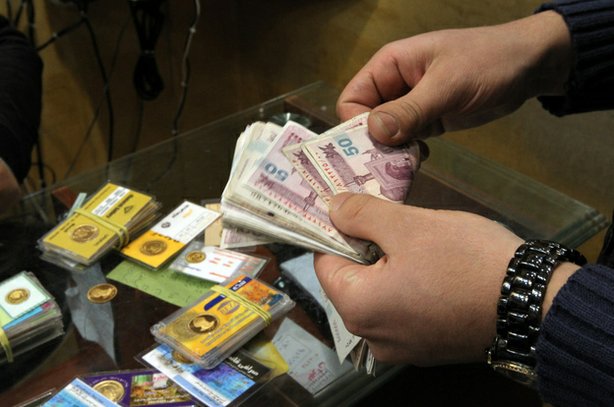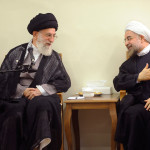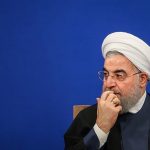by Djavad Salehi-Isfahani
The sharp drop in the value of the rial in the last two weeks has created much excitement in Iran and abroad, but mostly for the wrong reasons. In the parallel (or free) market for foreign currencies, the rial fell by 15% in one day this week, reaching its lowest value ever — 35,000 rials per US dollar — down by more than 50% compared to a month ago and 300% to last December when international sanctions tightened against Iran.
What all the related excitement overshadows is that this devaluation is not comparable to those in other countries where large devaluations caused severe shocks to the economy, such as those that swept through Asia in 1997-98. That’s because in those situations all prices were affected because all foreign exchange was traded at the same (rising) rate. This is not the case in Iran because nearly all foreign exchange is earned by the government, which has decided to sell most of it at a lower rate for the import of goods and services that it deems essential.
The rial devaluation that has created the media excitement is actually taking place in a narrow market that is shrinking in size and diminishing in importance. Iran’s Central Bank has classified a long list of goods into categories with priorities 1 through 10, leaving it to the parallel market to take of all other needs. Priorities 1 and 2 are food and medicine, receiving foreign exchange at the official rate of 12,260 rials per dollar, followed by other categories with lower priorities, which are mostly intermediate goods used in industrial production.
The government has been promising to do something for the import of these non-essential but important commodities, which account for about two-thirds of Iran’s imports, offering them some sort of preferential treatment. But the Central Bank was slow to respond and those producers who did not want to wait bought their currency needs in the parallel market, competing with speculators and people taking their money out of the country. The uncertainty about the sanctions, bewildering pronouncements from government officials in Iran, and hype over a possible Israeli attack, all combined to throw this market into chaos.
To protect Iran’s producers from what the government considers the consequences of “psychological war”, the Central Bank set up a “Currency Exchange Center” and invited licensed importers and exporters to trade their foreign currencies there, hoping that the auction rates reached there would be more stable and lower than the parallel market rate. When the Exchange Center opened just two weeks ago, the volume of transactions quickly jumped from $10 to $181 million per day, with most of the supply likely coming from the Central Bank. The Exchange Center diverted some of the supply of currency away from the parallel market, which I believe caused the rate there to soar.
Curiously, the Central Bank had predicted the opposite: that by arranging trade in the Exchange Center it would help lower the rate in the parallel market. This miscalculation added to the confusion and fear that the government did not know what it was doing. While the Exchange Center has produced a lower rate than the parallel market and can potentially shield producers from the worst psychological effects of sanctions and war, the shock to the parallel market has caused a serious political if not economic crisis for the government of Mr. Ahmadinejad.
Does all this mean that Iran’s economy is on the verge of collapse, as Israel’s Finance Minster reportedly said? The answer is no, because most of the economy is shielded from this exchange rate, though not from the ill effects of the sanctions, which will continue to bite for a while. Would it cause sufficient economic pain that would push the Iranian government to make concessions in its nuclear standoff with the West? The answer is not likely. The multiple exchange rate system, as inefficient as it is, will protect the people below the median income, to whom the Ahmadinejad government is most responsive.
But the government can ill afford to ignore millions of Iranians, mostly upper income Iranians, who are affected by the gyrations of the parallel market. Among them are millions of people who are seeking a safe place for their savings, parents who send money to their children for education abroad or need to travel there to see them. They are not all importers of luxury items or those who want to take their money out of Iran. In allocating its limited — perhaps shrinking supply of for foreign currency — the government has a difficult time balancing the needs of the lower middle class and the poor with those of upper income Iranians that it cannot rely on for political support.






Correction: please read ‘citing’ for ‘sighting’.
Dear Mr Salehi-Isfahani,
I am an economist and also producer in Iran born and raised in Germany. I came to your article through http://www.irananders.de, in which I posted a critical statement. Basically I found some main mistakes in your analysis I would like to point out here:
1. You state that the main imports are processed through the government with a preferred exchange rate and therefore the prices for essential goods can be controlled.
My comment: Unfortunately we saw a strong raise in essential goods, f.e. milk was 19.000 IRR this week, up from 8.000 IRR a year ago, also meat, rice, eggs, bread cheese are at least twice as expensive as last year. What is the reason? Very easy: first of all the agriculture sector depends also on imports, for example for seeds, agricultural machinery, some livestock feed etc. And another important point is: as farmers, manufacturers and traders of essential goods do not know, if the currency exchange subsidy will last, they try already to price in the free market exchange rate, so they are prepared for the case, that the government will change the exchange rate for products in classes 1 and 2 (mentioned in your text). The reason is, that it happened now a few times, that the government changed its policy within weeks, and if you base your pricing on the subsidized currency exchange rates and it suddenly changes, you lack the capital to be able to purchase your raw materials based on a twice or triple as high exchange rate.
Government tried and still tries to control these prices, but they were not very successful, as some producers just stopped production and so we had a lack of essential products, f.e. milk, for a few weeks.
2. You state, that the “Currency Exchange Centre” invites market players to buy and sell hard currency under government control and its opening resulted in a flow of currency into the centre and lack of hard currency in the free market.
My comment: the truth is, that the Central bank planned such an “Currency Exchange Board”, but finally they decided to change their policy and opened a “Curreny Room” (Otagh-e-Ars). In this Currency Room the whole supply of hard currency comes straight and only from the Iranian Central Bank (see the rates on http://www.cbi.ir). Unfortunately, it does not really work at the moment, the reasons could be various, but the main problem is that they give the companies the promise to pay hard currency (takhsise ars), but they hardly really pay. As the market saw, that this is not a substantial option, the free market prices surged again; and they are at 37.000 IRR per USD at this moment, pretty much a record high.
However, in the last days the Currency Room started to pay more companies, so I believe if this continues for the next 2 or 3 weeks, the free market rate will drop.
One comment regarding the economy:
Apparently the government was surprised about not being able to sell the oil they exported to Europe before to Asia now. We do see today the result of this sudden drop in Oil exports which happened after July, 1st, because there is always a time lag from oil exports to hard currency inflow.
Meanwhile, the oil exports raised again to approx. 1,5 Mio. barrels a day, and I believe that the devaluation of the Rial can at least be halted. Also, in the northern hemisphere winter starts, so demand of oil will be raising the the world will be depended on using the Iranian oil, as we all know that we have more demand than supply anyway.
Therefore I share your view that the Iranian economy will not at all collapse. It is all over a very strong economy, nearly no foreign depts, most businesses are cash (including real estate, very low bank depts), and people are also very patient. Also, I believe, that US and Europe just misuse the question of uranium enrichment in order to gain control over Iran´s vast oil, gas and other natural reserves, so opposing those sanctions is very important.
Nevertheless the crises management of the Iranian government and especially of the Central bank is very bad. They seem to be surprised about the results of their own actions (as f.e. the Currency Room), and they don´t play an open game with the people and especially manufacturers and traders. To overcome sanctions it is essential to play the game very professional.
With all due respect to all the comments posted thus far,let`s not fail to notice that the Iranian government has well learned the power of unpredictibility,and is becoming increasingly good at taking irrational steps to ruffle the equations. And let`s bear in mind that no tyranny throughout the world`s history has been unwilling to make human sacrifices to stay in power. Prior to tightening the sanctions,the economy revolved around raw material export,and services. Considering the FACT that China,India and Turkey`s corroboration of the sanctions (among other countries) is in place only on the surface,owing to the innovative paths that Iranians are very good at unearthing to “circumvent the law”,and regarding the huge social and economic gap in the population of Iran which forms a minority of the middle class and a majority of working class, the latter demanding not much more than only food,clothing,shelter and services necessary for sustaining life,one can easily come to realize that despite devastating impacts on growth in GDP,hinderance to imports will have far fewer than expected effects on an already primitive economy,as long as it hasn`t impeded primitive supplies which would be,for the best part,food and medicine,which (as prof. Isfahani did indeed very well put) can be compensated by shifting import interests from “unnecessary” commodities to “higher priority” goods. And as for the services,the police state regime has had a long history of distorting the real value of work and therefore obliging service providers to continue performing,either by force or deception,at the expense of humanity,to avert an uprising by the predominate working class. So the real question might not be whether this economy will collapse or not,rather,the salient question might be,that how you define “collapse” for an already almost collapsed economy?
And it`s worth noting that the policy makers of superpowers like the US are by no means negligent of the facts. So one might ask what could the real incentives behind persisting these puportedly “failed” strategies are?